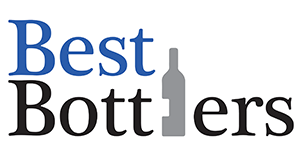Title Page
-
Area Inspected
-
Persons Inspecting
-
Business/Site
-
Date
-
Location
ELECTRICAL
-
1. All power outlets, plugs & switches in good condition (not broken) & tagged out if faulty?
-
2. Safe use of extension leads / power boards? e.g. no double adaptors, piggyback plugs, overloading.
-
3. All portable electrical equipment tested, tagged & in date (check tag on power cord)?
-
4. All leads used are neatly set out to prevent trip hazards &/or be protected from water/liquid exposure?
-
5. Lighting in the work area adequate for the work being carried out and is it in suitable condition?
-
6. Any faulty equipment? If so, has it been tagged out? e.g. Yellow & Black ‘Do Not Use’ tag.
MANUAL HANDLING
-
7. Is excessive heavy manual lifting eliminated & are loads safely within employee capabilities?
-
8. Are mechanical lifting aids available as required & are they used?
-
9. Are frequently used items within easy access & stored between knee & shoulder height?
-
10. Are sustained movements such as twisting, long-term bending, stooping or reaching above shoulder height eliminated or minimised/ managed?
-
11. Repetitive movements minimised &/or controls such as task rotation & breaks taken?
TRAFFIC MANAGEMENT
-
12. Where required, are there barriers to segregate pedestrians from traffic, &/or designated walkways?
-
13. Is vision at intersections unobstructed?
-
14. Are all forklift operators wearing seatbelts & travelling at a slow speed?
-
15. Are all personnel in traffic areas wearing high visibility clothing /vests?
-
16. Are forklifts sounding horn when entering/exiting doors &/or blind corners?
-
17. All persons maintaining a distance of 3m from forklift trucks where possible to reduce risk of people & plant interaction?
-
18. Is there a designated safe driver zone and/or clear direction to drivers in terms of where to stand when forklifts are loading/unloading?
WALKWAYS, STAIRS & LADDERS
-
19. Are walkways clear of trip & slip hazards?
-
20 . Are stairs/catwalks in good condition, with adequate handrails where required & have anti-slip treads?
-
21. Only commercial ladders used (not household) & in good condition i.e. working order, rubber feet
-
22. Ladders securely fixed at top where applicable?
-
23. Are safety steps available where required?<br>Note – crates etc must not be used as a step.
PLANT & EQUIPMENT
-
23. Appropriate equipment & tools used for the task/s at hand, & in good & safe condition?
-
24. Start/stop devices (including emergency stops) appropriately positioned, clearly marked & working
-
25. Adequate machine guarding in place where entanglement/injury could occur?
-
26. Adequate work space around machine/s?
-
27. If noise level excessive, is hearing protection available & being used
-
28. Correct PPE available & used for tasks at hand
STORAGE
-
29. Items stored correctly & neatly to minimise falling/collapsing hazards
-
3 . Storage/warehouse racking in good & stable condition & marked with load limits where required
-
31. Pallets that are used for dry & finished goods in good condition & stable
-
32. Stored item loads above head height secured to pallet e.g. pallets of wine, dry goods
WORK ENVIRONMENT/HOUSEKEEPING
-
33. Tools that are not in use kept in storage
-
34. Work areas, including floors, uncluttered, tidy & clean, rubbish cleared at regular intervals
-
35. Work areas well ventilated
-
36. No smoking signs observed
-
37. Appropriate safety signs in place & in suitable condition
HAZARDOUS SUBSTANCES
-
38. Gas cylinders secured/chained
-
39. Appropriate PPE available, used as required & PPE storage facilities provided.
-
4 . Safety Data Sheets (SDS) easily accessible & in date i.e. <5 years - check for a chemical in use.
-
41. If a safety shower &/or eye wash station present, are they working? (test)
-
42. Appropriate storage for chemicals?.
-
• Clean, tidy & segregated as required.
-
• Stored in closed, labelled containers i.e. Name, Dangerous Goods Class, Food safe, Hazard
-
• Bunding/spill trays in place for bulk chemicals to prevent spillage/ leakage
-
• Adequate chemical warning signs in place
-
• Flammable substances used & stored away from naked flames/hot work
-
• Chemicals &/or empty containers disposed of appropriately
AMENITIES – STAFF ROOM / TOILETS
-
43. Hygiene - Staff room table, benches, sink area, fridge clean & tidy, bins not overflowing?
-
44. Toilet areas clean & tidy – general housekeeping?
EMERGENCY MANAGEMENT, FIRE SAFETY & FIRST AID
-
45. Is fire-fighting equipment (extinguishers, fire blankets, fire hoses) in the work area:
-
• Easily accessible & free of obstructions?
-
• Been tested within the last 6 months (check tag)
-
46. Are emergency evacuation instructions, map, names of emergency response/fire wardens etc clearly displayed?
-
47. Are all emergency exits clear, easily accessible & exit lights in working order?
-
48. Are first-aiders trained up to date, names displayed on notice boards &/or on first aid kits?
-
49. Is an appropriately stocked first aid kit & register easily accessible & kit serviced within 12 months
OFFICE WORK AREAS & STATIONS
-
51. Work station adequate, set up correctly e.g. size, layout, computer screen height, Office chairs are in good working order & adjustable
-
53. Air-con system maintained - date of last service within 12 months?
-
54. No obstructions or trip hazards on floor, no draws left open etc.
SIGN OFF
-
Once inspection is conducted, pass to Department &/or Site Manager to review & establish actions required, in consultation with relevant staff.
-
Manager Responsible (Name, Signature & Sign Date)
-
Site Manager has reviewed? (Name, Signature & Sign Date)
-
Notify WHS Manager immediately regarding items raised that may:
> Impose a significant risk to the health & safety of personnel &/or business
> Be relevant to other sites
> Be complicated to eliminate or reduce the risk & further advice is required











